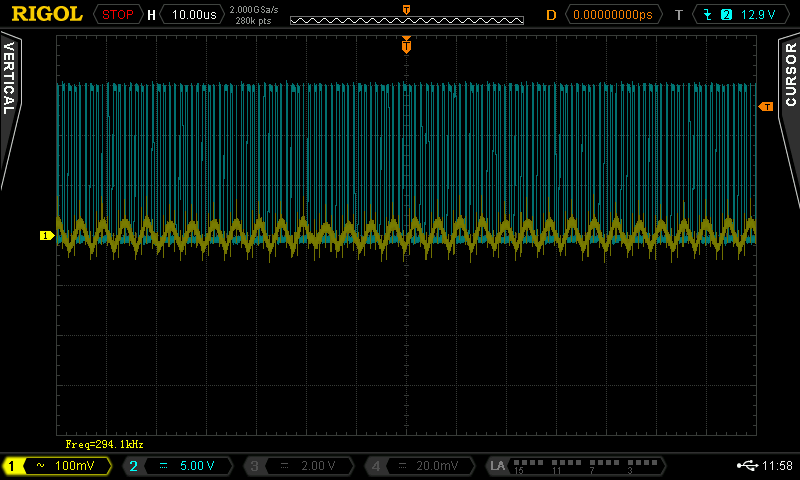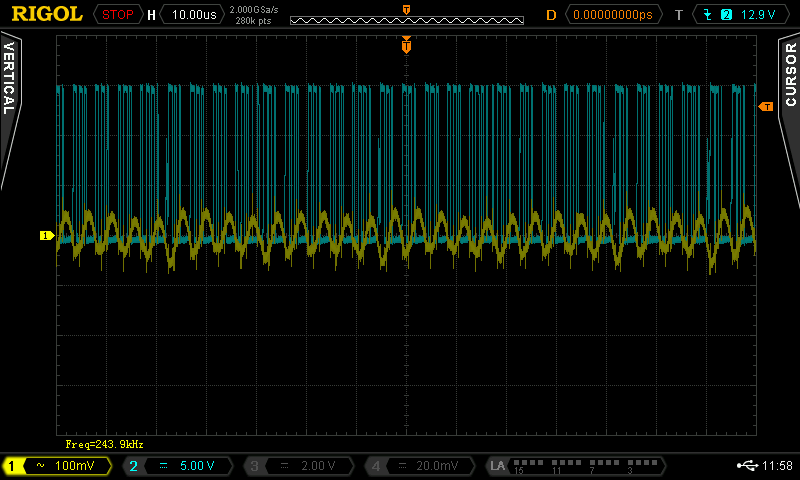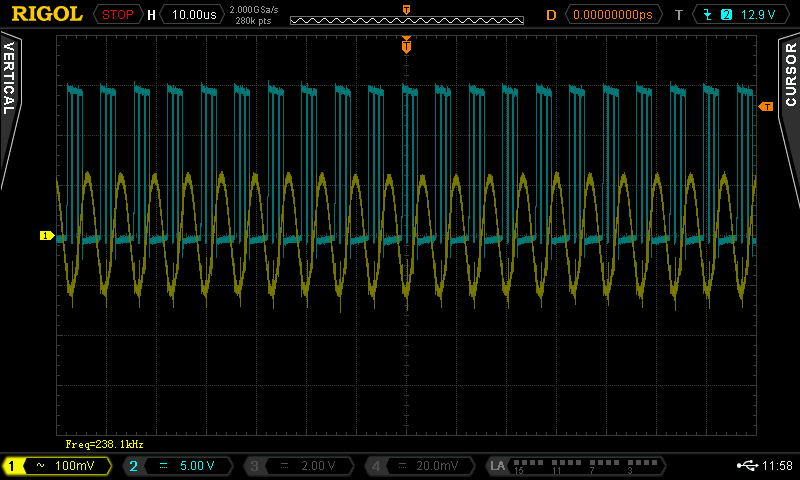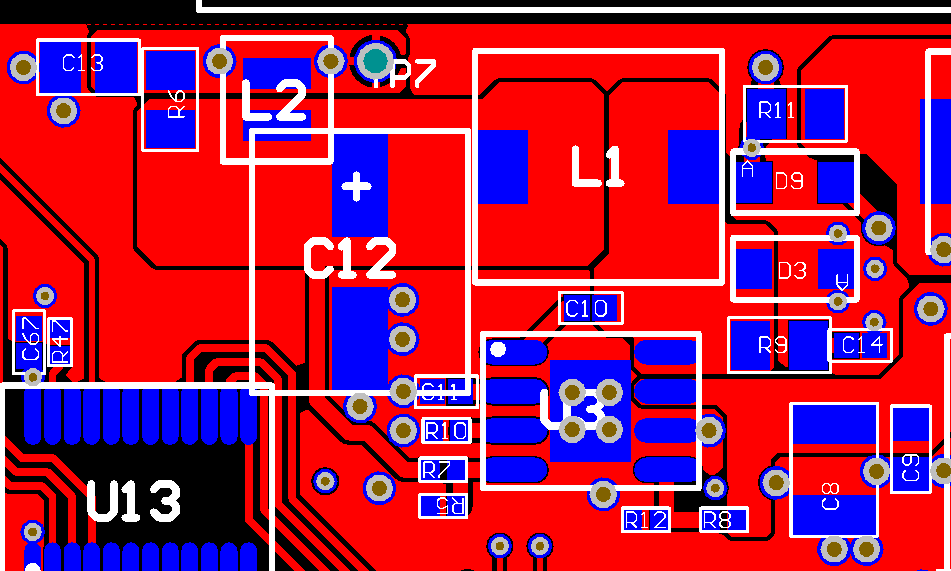I've just received our prototype boards with the LM22672 5 V DC/DC.
Problem is that the output voltage has oscillations when the load is increased. These oscillations are in the same frequency range as our RFID reading (125 kHz) so it causes major reduction in tag reading distance.
Attached below is schematic of the DC/DC and oscilloscope screenshots for different load conditions. Channel 1 is at 5V node, channel 2 is SW node. Electronic load used for loading.
Do you have recommendations on how to avoid these oscillations?
~50 mA load:
~150 mA load:
~250 mA load:
~350 mA load:
~450 mA load:








